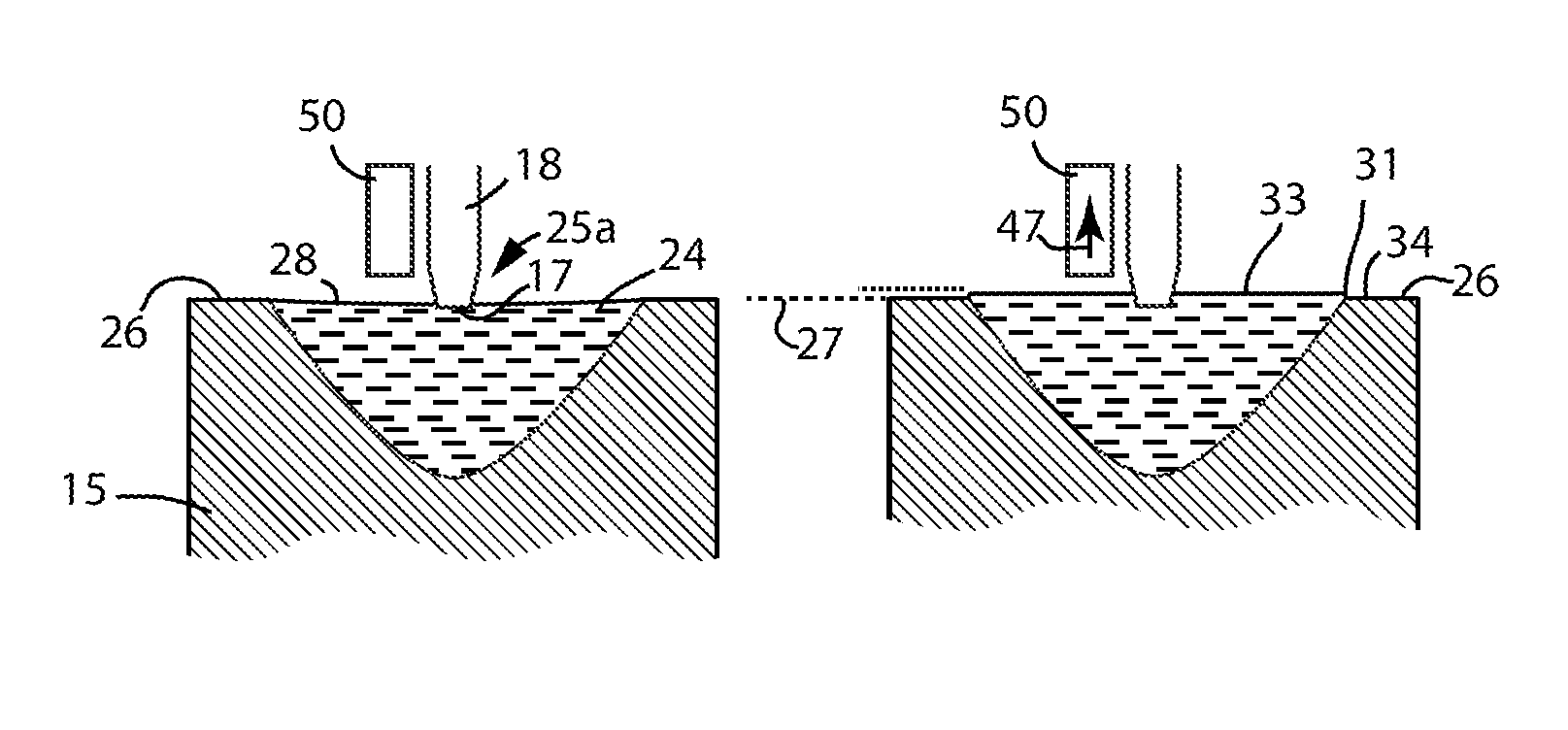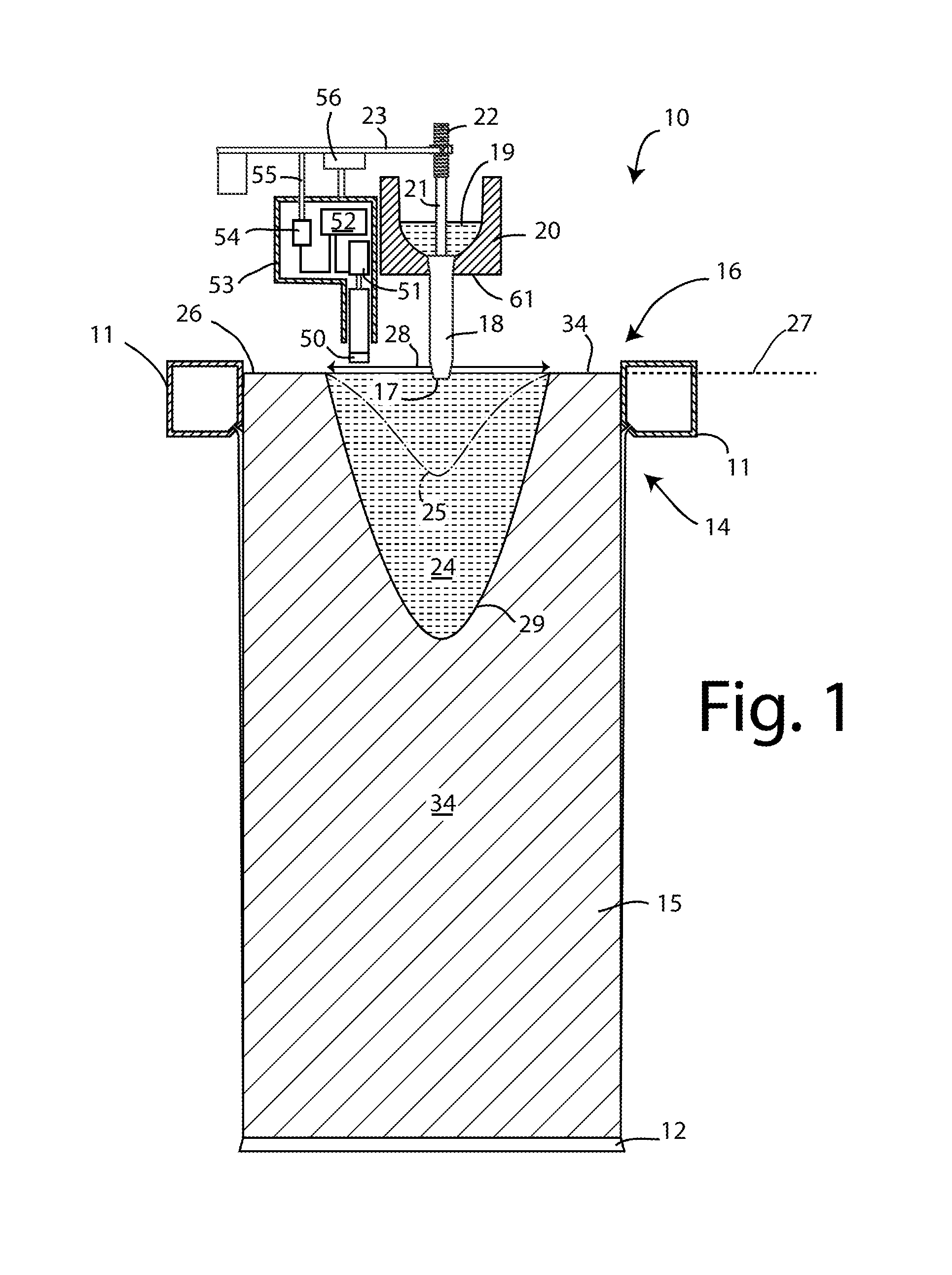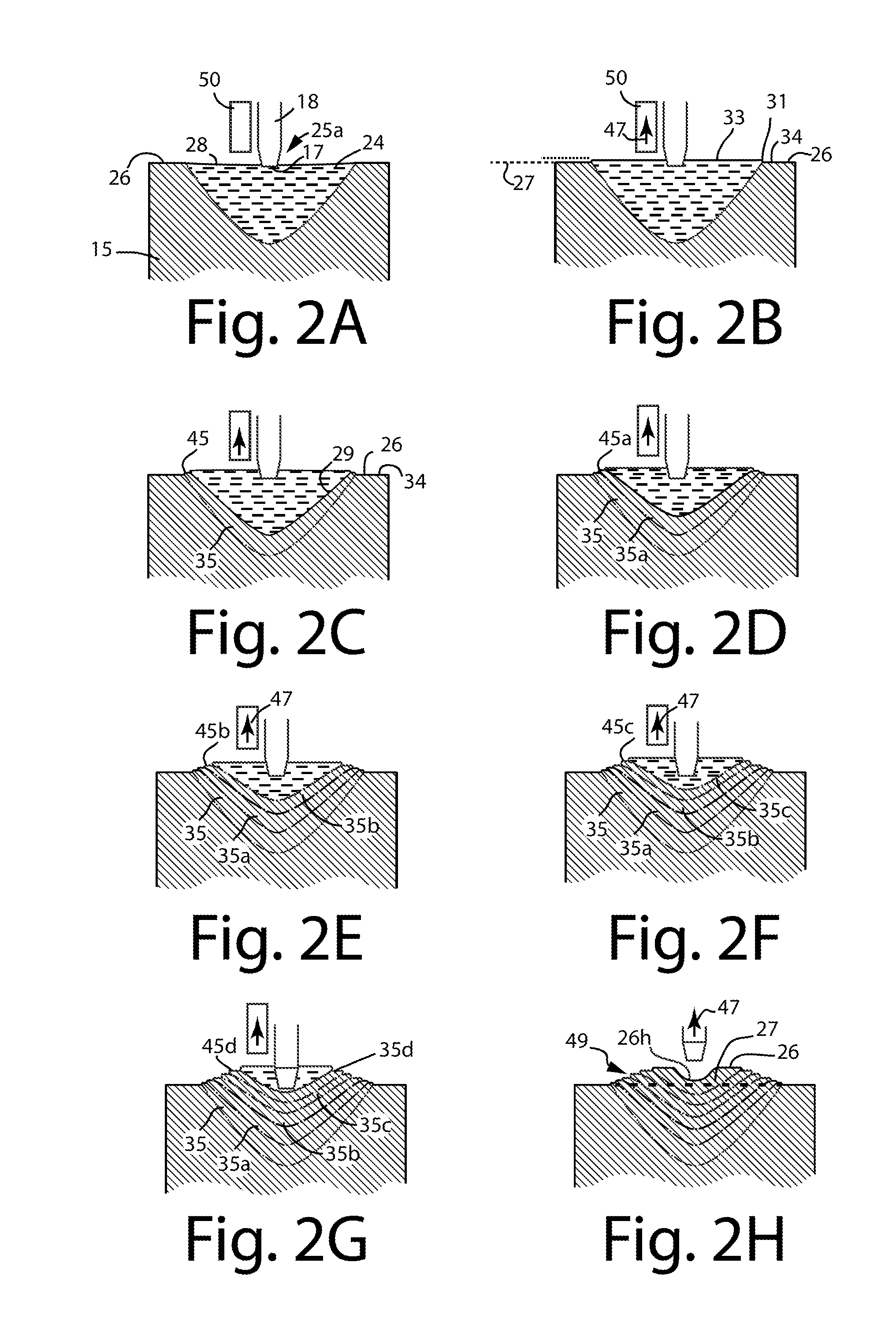Elimination of shrinkage cavity in cast ingots
a technology of shrinkage cavity and cast ingot, which is applied in the field of partial or complete elimination of shrinkage cavity in cast ingot, can solve the problems of insufficient removal of excess metal, defect known as “alligatoring” and other problems, and achieve the effect of avoiding metal spillag
- Summary
- Abstract
- Description
- Claims
- Application Information
AI Technical Summary
Benefits of technology
Problems solved by technology
Method used
Image
Examples
example 1
[0054]Aluminum alloy ingots were cast in a tandem mold direct chill casting apparatus of the kind shown in plan view in FIG. 6 of the accompanying drawings.
[0055]Prior to the cast, heated control pins were inserted into the spouts and powered at 1000 watts each (full power). At 100 mm into the cast, the power was reduced to 25% (250 watts). At a cast length of 200 mm before the end of the cast (stoppage of bottom block), the power to the control pin heaters was increased from 250 watts to 1000 watts to ensure that the metal in the spouts stayed molten before the end of cast filling process.
[0056]The end-of-cast sequence was initiated manually when the desired length of the cast was reached. This caused the furnace to tilt back and the control pins to close the spouts. The bottom block continued to move down. As the furnace began to tilt back, a dam was placed manually into the distribution launder to prevent metal flowing back to the furnace, thus maintaining a sufficient volume of ...
example 2
[0062]A casting operation of the kind described in Example 1 was carried out, again in the apparatus of the general kind shown in FIG. 6, but with unheated control pins As casting proceeded, the heat of the molten metal kept the spouts and pins sufficiently hot to avoid freezing and blockage. The temperature of the molten metal supplied to the casting apparatus was sufficiently elevated to avoid freezing caused by heat losses in the apparatus. The details of the casting procedure are as follows.
[0063]Casting was carried out in a mold table holding five casting molds, but the center mold (position number 3) was not used so only four ingots were cast simultaneously. In fact, the ingots cast in this way were stub ingots, i.e. ingots of less than normal height. Automation changes were added to the PLC program to modify the timing of the trough tilt and metal level control pins. At end-of-cast, the furnace was tilted back as normal. When the metal level in the trough dropped to a certain...
example 3
[0102]The procedure of Example 2 is repeated except that an electrical immersion heater is positioned within the trough 20 to provide super-heat for the molten metal before it enters the troughs 18. The heater is operated before casting commences to ensure that freezing of metal does not take place in the spouts 18 as the metal first runs through them. Additionally, the spouts 18 and pins 21 are pre-heated by means of torches, as in Example 2.
[0103]The immersion heater is operated during casting to avoid freezing of metal and is kept in operation when casting is terminated so that, during the topping-up procedure, the molten metal entering the spouts 18 does not freeze. By this means, 12 to 15 topping up iterations are achieved before the spout 18 and pin 21 cool sufficiently to risk blockage.
PUM
| Property | Measurement | Unit |
|---|---|---|
| height | aaaaa | aaaaa |
| total height | aaaaa | aaaaa |
| total height | aaaaa | aaaaa |
Abstract
Description
Claims
Application Information
 Login to View More
Login to View More - R&D
- Intellectual Property
- Life Sciences
- Materials
- Tech Scout
- Unparalleled Data Quality
- Higher Quality Content
- 60% Fewer Hallucinations
Browse by: Latest US Patents, China's latest patents, Technical Efficacy Thesaurus, Application Domain, Technology Topic, Popular Technical Reports.
© 2025 PatSnap. All rights reserved.Legal|Privacy policy|Modern Slavery Act Transparency Statement|Sitemap|About US| Contact US: help@patsnap.com



